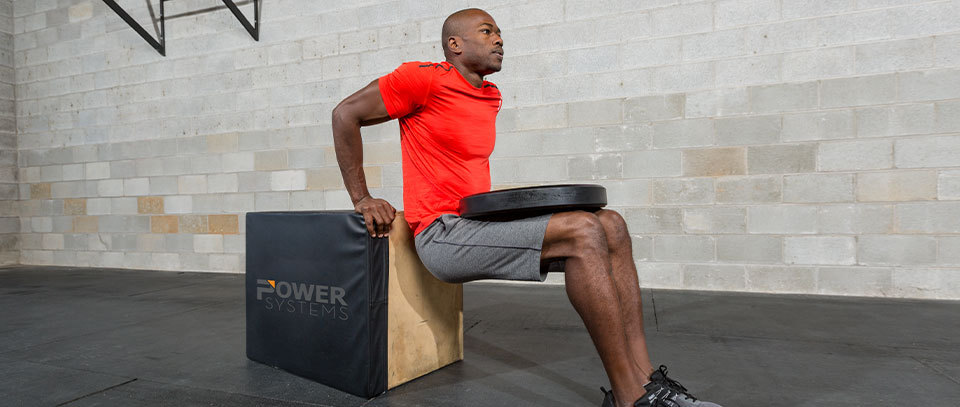Plyometric training techniques have been used in athletic training programs for years. Explosive training is a coach’s go-to modality not only for developing muscular power in their athletes, but also for improving their athletes’ ability to accelerate and decelerate the body when changing directions. This can lead to better reaction time and overall function and safety while in motion.
Each plyo exercise can be broken down into three distinct phases:
- Eccentric or loading phase
- Amortization or stabilization phase
- Concentric or unloading phase
For best results, each phase should be broken down and coached separately. Next level coaches teach their athletes the to understand their bodies and the proper mechanics to maximize their movements.
To begin a plyometric movement, we first recognize the elastic property of the muscle fibers by loading the tissue in the eccentric phase. Training your team to load in an “athletic” and grounded stance with soft joints and a braced core will maximize the eccentric phase.
Next, there is a moment of stabilization before take-off as the body prepares to shift the potential energy loaded in the tissue to the kinetic energy of motion. The key is to train the athlete to transition their potential energy in the stabilization phase in a short amount of time. The less time spent in the stabilization phase the more powerful the result.
The third phase, or the concentric/unloading phase, happens rapidly. An important part of effective plyometric training is rapid acceleration followed by controlled deceleration. Coaching proper reactive or landing technique is crucial to injury prevention and the final piece of the puzzle to maximize not only the plyometric movement but the athlete’s overall performance.
Keep in mind that the brain will only recruit muscle fibers at the speed it has been trained to do so. If the nervous system and the muscular system are not trained to recruit muscles rapidly, when met with a demand for quick reaction, neither will respond appropriately and injury can occur.
Athletes of all levels can be trained with plyometrics, however there are a few pre-requisites. A base level of balance, stabilization, coordination, and core strength is required for jumps, bounds, and hops executed on one or two legs. Assess your athletes in these areas and challenge them as you see progress.
While many plyometric exercises require nothing more than body weight, there is no shortage of plyometric training tools available to take these exercises to the next level. Check out these three multipurpose pieces we developed to help you power the potential of your winning team.
3-IN-1 FOAM PLYO BOX: Sturdy, compressed foam is covered with a durable vinyl cover to minimize injury risk. Each box features 3 training heights to meet the training needs of athletes at any level. Two versions available: 16”x20”x24” and 20”x24”x30”.
2-IN-1 FLIP AND PLYO: Tire meets plyo box combo is perfect for training plyometric movements of the upper and lower body. It is built for flipping, lifting, pushing, spinning, and carrying all while providing the added functionality of a plyo box. Available in 100 lbs. with a height of 12” tall.
References: Clark, Michael A. et al. NASM Essentials of Personal Fitness Training, Fourth Edition. Jones & Bartlett; Burlington, 2014.




You must be logged in to post a comment.